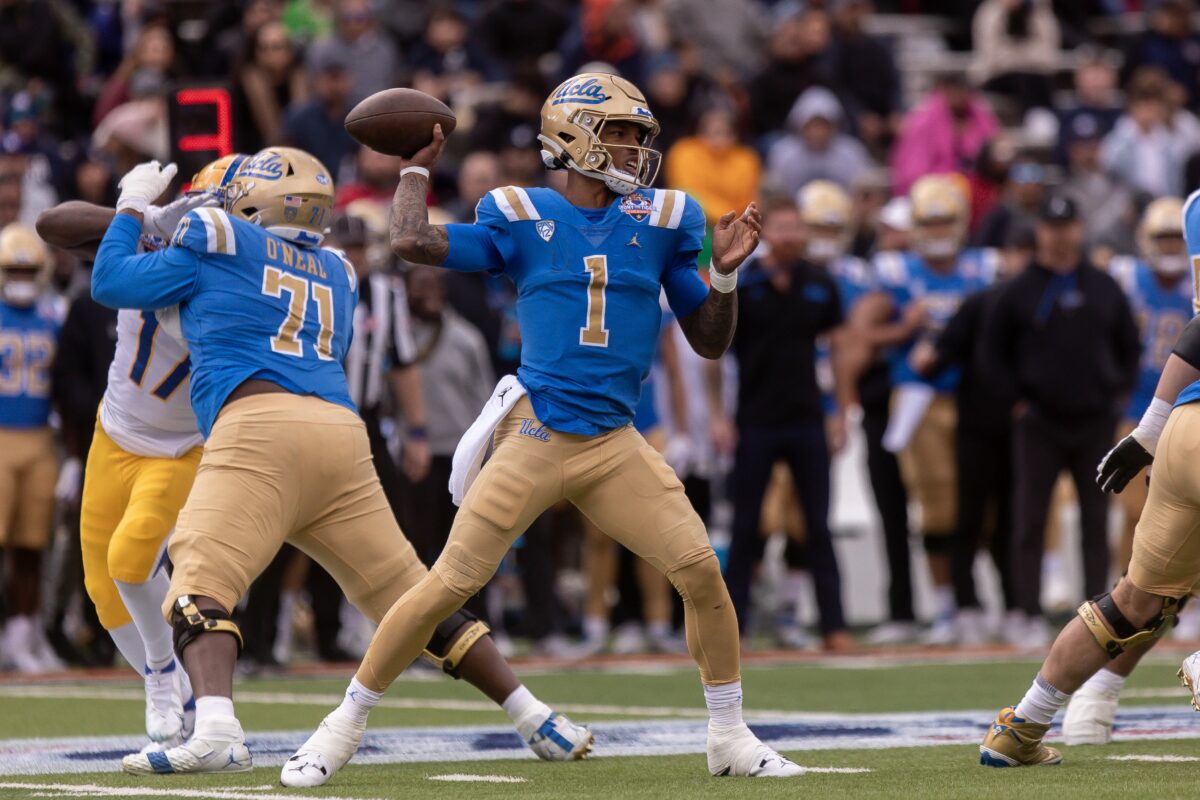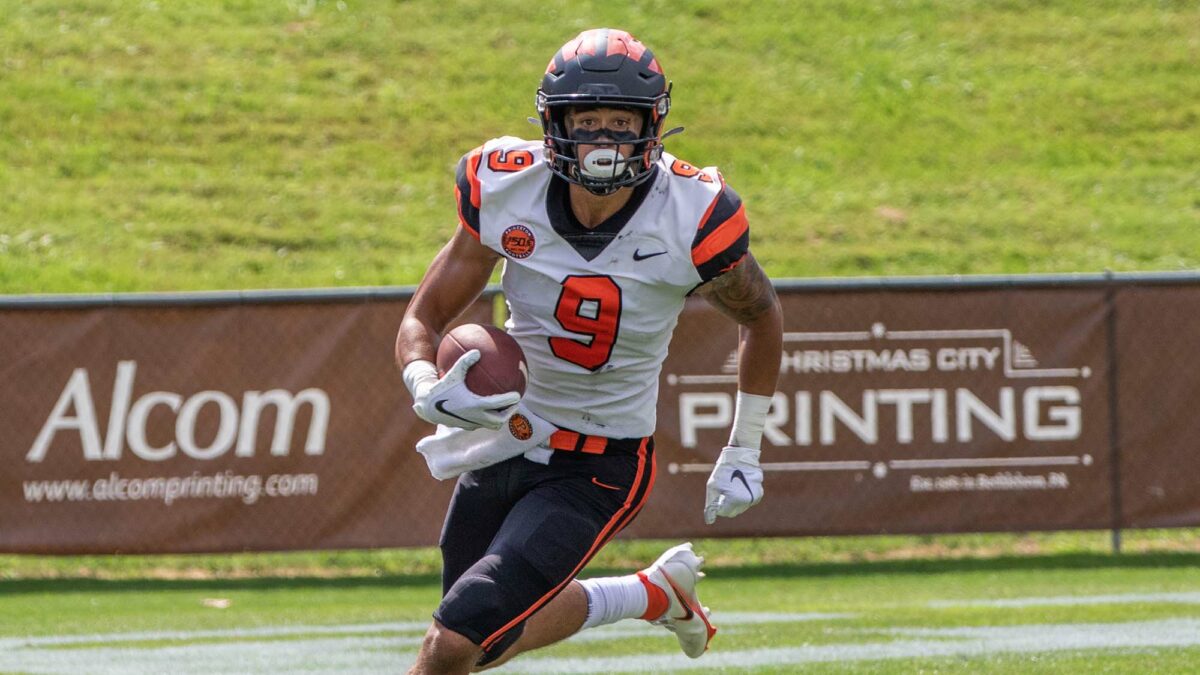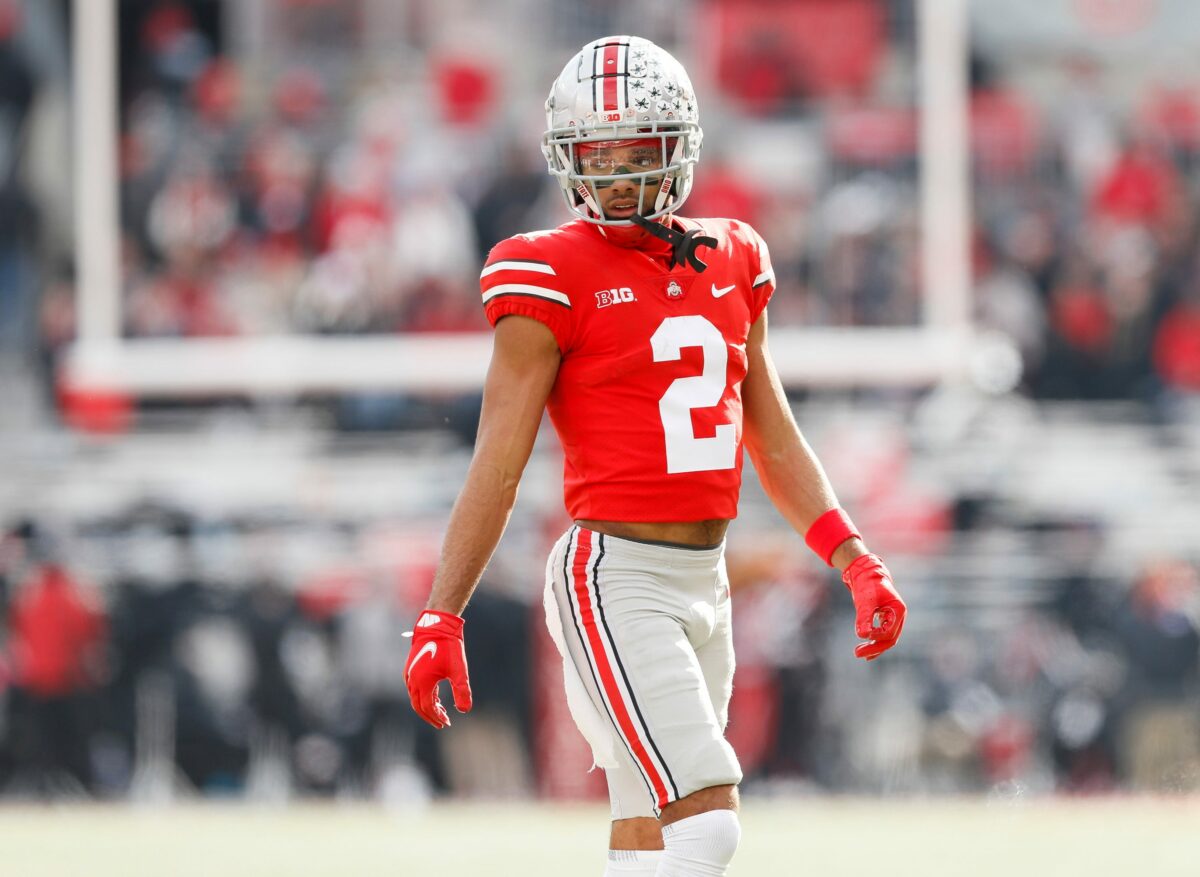The Chargers enter the 2021 NFL draft, looking to put together the most optimal roster under first-year head coach Brandon Staley.
With the No. 13 overall pick, Los Angeles could go a variety of ways but would be the best-scenarios for the team?
Let’s take a look at five of them, starting with the one that would be the biggest splash of the night.
1. Trade up for Penei Sewell
Quarterback Justin Herbert practically saved general manager Tom Telesco’s job, and the best way to reward him is by going up and getting him a premiere blindside blocker, one who he happens to be very familiar with and happens to be lobbying for.
However, the only way a trade-up for Sewell would occur is if he gets past the Bengals, who will be thinking long and hard about getting their young signal-caller, Joe Burrow, some much-needed protection.
If Sewell gets to No. 6 (Dolphins) or No. 7 (Lions), Telesco should be on the phone with those team’s perspective general managers, inquiring to swap picks, even if it means giving up next year’s first rounder.
Sewell, who blocked for Herbert for two seasons, is an elite pass protector and physically imposing run-blocker, who would give the Bolts immediate and long-term help at the left tackle position.
2. Rashawn Slater takes a tumble
While the Bengals are considering taking LSU wide receiver Ja’Marr Chase, it wouldn’t surprise me if Sewell ultimately ends up being the pick. If that’s the case, the Chargers’ attention turns to Slater, likely the next best tackle on their board.
Like Sewell, there’s a good chance that Slater could go in the top-10, with the Panthers being the likely destination spot, given the need for protection for quarterback Sam Darnold. However, Carolina is also in need of a cornerback, and could elect to take Alabama’s Patrick Surtain.
Teams picking before Los Angeles – Cowboys, Giants and Eagles could be interested in Slater, as well. But if the former Northwestern product does experience a bit of a slide, Telesco should fill out the draft card and not think twice.
Forget about his measurements. Even though he doesn’t have the height or length that meets NFL thresholds for the tackle position, Slater is a powerful and mobile lineman with an iron grip who has dominated elite competition like Chase Young.
3. Jaycee Horn falls into their lap
Addressing the tackle position should be priority No. 1 for the Chargers, but if both Sewell and Slater are gone, taking a dynamic defensive back that fits into head coach Brandon Staley’s defense like a glove would go a long way.
Horn is the type of matchup eraser who can be used inside or outside and against any receiver or tight end, similar to the way Jalen Ramsey was used. Due to his combination of size, athleticism, competitiveness, football IQ, smoothness, ball skills and versatility, Horn has All-Pro upside.
Horn has been in contact with Los Angeles a couple of times, according to Chargers Brawl Podcast. He said that he has a connection with defensive backs coach Derrick Ansley and shares the same agency (Athletes First) as safety Derwin James.
4. Trade back and acquire more picks
I know exactly what you’re thinking. Why isn’t drafting Virginia Tech offensive tackle Christian Darrisaw considered the fourth-best option for the Chargers? While I don’t think taking Darrisaw at No. 13 would be a reach, I believe there are other tackles that aren’t far off from him.
Well, why not try to acquire another pick in the top-100 while still getting your left tackle of the future or a valuable piece on defense with picks No. 19 (Football Team) or Bears (No. 20), teams who could be looking to move up to draft a quarterback?
The only issue is that Telesco has never traded back in his eight years as general manager. I laid out a few options if Los Angeles was to trade back. You can also throw in Oklahoma State’s Teven Jenkins and Texas’ Samuel Cosmi into the mix.
5. Draft Christian Darrisaw
Here it is. The most likely scenario out of them all. Like I mentioned, drafting Darrisaw would not be a bad pick or a reach by any means. I just have him ranked in the mix of tackles likely to go in the back end of the first-round.
Darrisaw does have a good resume with 35 starts at left tackle. He only allowed six pressures and no sacks, finishing with a 95.6 overall grade by Pro Football Focus and earning second-team Associated Press All-American and first-team All-ACC accolades in 2020.
On the field, the 6-foot-5 and 314 pounder is smooth in pass pro, showing anchor ability, strength, body control, proper hand technique and awareness to shut down a variety of pass rushers.
In the run game, he flashes strength to move defenders. He shows solid ability to reach and has the athletic traits and movement skills when getting to the second level to pave the way for ball carriers.
Now, there are times when it looks like he is in cruise control a little bit, lacking overall quickness and a sense of urgency, both things that he will need to gain a sense for at the next level.
The bottom line is that while Darrisaw isn’t my first preference, his capability in pass protection, physicality in the run game, size and length and overall experience at the position are all quality traits to be a starting left tackle in this league.


 –
–  – 7 p.m.
– 7 p.m. –
– 




